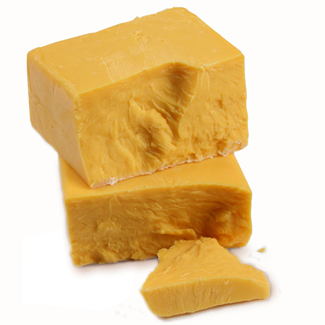By Erica

It's time for what you've all been waiting for-- another recipe from C:A J! I adapted this recipe from
one I found on Epicurious.com. It was originally in Gourmet Magazine (R.I.P.) and called for Gorgonzola cheese along with the milder Fontina. My fridge, however, only contained some of
Capri's Smokey Bear, a smoked muenster style cheese, and so I used that instead. Some of the measurements in what I typed up below are only approximate, so feel free to increase amounts of cheese, garlic, spices etc. to your liking.
This dressed up mac & cheese is great for when you're having company but don't have time to prepare the day of. I made the recipe up to the baking part (Step 6) the day before and refrigerated it over night. The next day, I just popped it in the oven for 25 minutes before serving. The crowd (Kara & C.) went wild!
INGREDIENTS:
1 onion, chopped into strips
1/2 pound crimini mushrooms, chopped
1 clove garlic
Chili oil
2 tablespoons of butter
1 heaping tablespoon of flour
1 cup milk
1 large or 2 medium tomatoes
parsley
1 1/4 cup of smoked cheese (such as Capri's Smokey Bear)
1/2 pound of elbow pasta
Fresh grated parmesan cheese
Butter for garnish
INSTRUCTIONS:
1. Sautee 1 onion in chili oil until the onion begins to soften. Add the mushrooms and garlic. Cook till soft (about 10 minutes). Transfer to a large bowl.
2. Melt 2 tablespoons of butter in the pan. Add 1 heaping tablespoon of flour and make into a roux (low to medium heat), whisking constantly. Add one cup of milk and whisk until thick (about 3 minutes).
3. Add to mushrooms and onions. Add chopped tomato, parsley, and cheese. Mix until blended.
4. Cook pasta for 5 minutes (should still be slightly undercooked). Add to cheese mixture. Salt and pepper to taste.
5. Put in a buttered casserole dish. ** Can make to here a day ahead and refrigerated. Bring to room temp before baking **
6. Sprinkle with parmesan cheese and small butter chunks. Bake uncovered at 450 for 20-25 minutes or until top begins to brown.
NOTES:
-You can substitute olive oil for chili oil, but add chili pepper flakes when seasoning if you do this so that the spice is there. You can try using other types of cheeses, too.
-The picture above includes a light salad made with fresh lettuce, tomato, French Feta cheese (also from Capri), and homemade croutons. We dressed it with some fresh lemon juice and olive oil to taste. It made a perfect side dish.
 The Wisconsin State Fair Butter and Cheese Contest was held last Friday with over 300 entries. The winner will be celebrated on August 5th at the Wisconsin State Fair's Blue Ribbon Cheese and Butter Auction.
The Wisconsin State Fair Butter and Cheese Contest was held last Friday with over 300 entries. The winner will be celebrated on August 5th at the Wisconsin State Fair's Blue Ribbon Cheese and Butter Auction.













